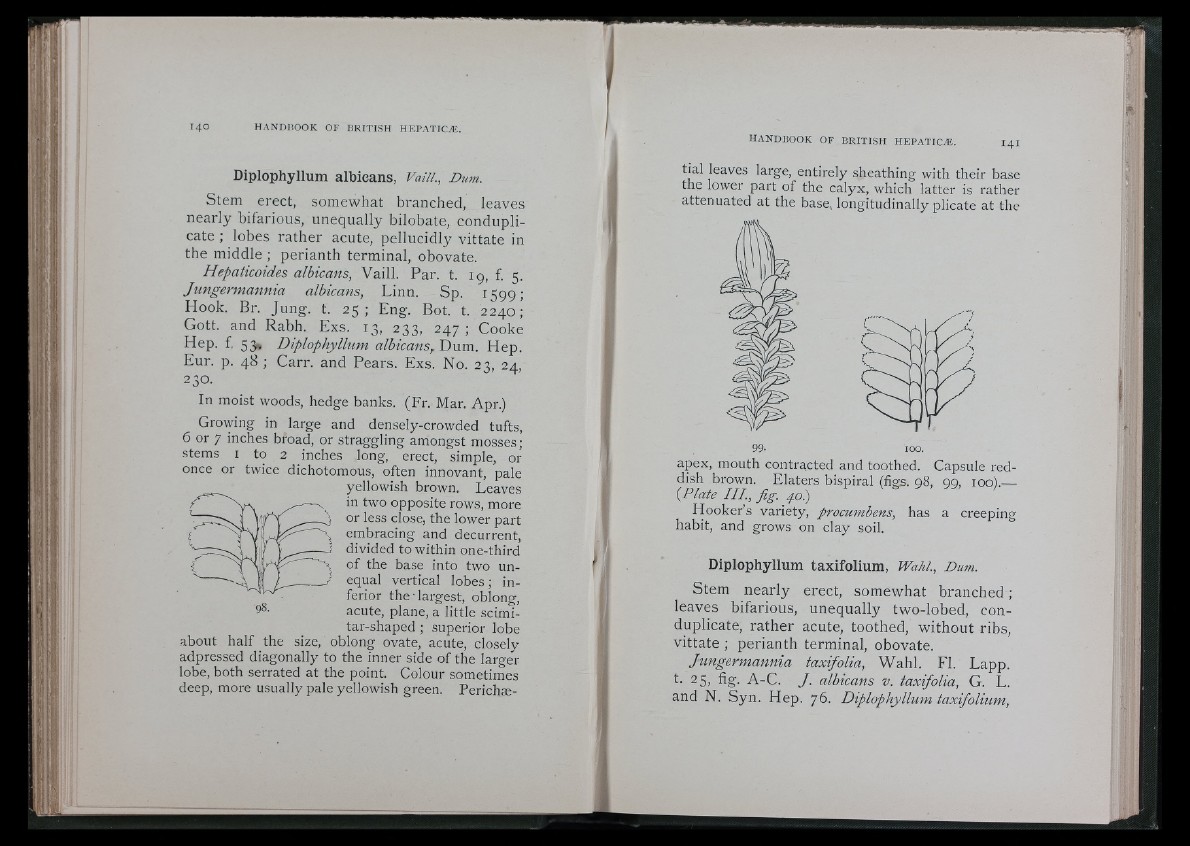
Diplophyllum albicans, Vaiii, Dum.
Stem erect, somewhat branched, leaves
near ly bifarious, unequally bilobate, conduplicate
; lobes rather acute, pelluc idly vit tate in
the middle ; perianth terminal, obovate.
Hepnticoides albicans, Vaill. Par. t. 19, f. 5.
Jungermannia albicans, Linn. Sp. 1 599;
Hook. Br. Jung. t. 2 5 ; Eng. Bot. t. 2240;
Gott. and Rabh. Exs. 13, 233, 2 4 7 ; Cooke
Hep- Diplophyllum albicans,. Dum. Hep.
Eur. p. 48 ; Carr, and Pears. Exs. No. 23, 24,
230.
In moist woods, hedge banks. (Fr. Mar. Apr.)
Growing in large and densely-crowded tufts,
6 or 7 inches broad, or straggling amongst mosses;
stems I to 2 inches long, erect, simple, or
once or twice dichotomous, often innovant, pale
yellowish brown. Leaves
in two opposite rows, more
or less close, the lower part
embracing and decurrent,
divided to within one-third
of the base into two unequal
vertical lobes ; inferior
the largest, oblong,
acute, plane, a little scirni-
tar-shaped ; superior lobe
about half the size, oblong ovate, acute, closely
adpressed diagonally to the inner side of the larger
lobe, both serrated at the point. Colour sometimes
deep, more usually pale yellowish green. Pericha;-
tial leaves large, entirely sheathing with their base
the lower part of the calyx, which latter is rather
attenuated at the base, longitudinally plicate at the
99- 100.
apex, mouth contracted and toothed. Capsule reddish
brown. Elaters bispiral (figs. 98, 99, 100).—
{Plate III., Jig. 40.)
Hooker’s variety, procumbens, has a creeping
habit, and grows on clay soil.
Diplophyllum taxifolium, Wahl, Dum.
Stem nea r ly erect, somewhat branched ;
leaves bifarious, unequally two-lobed, conduplicate,
rather acute, toothed, without ribs,
vittate ; perianth terminal, obovate.
Jungermannia taxijolia, Wahl . FI. Lapp.
25» fig- A -C . J . albicans v. taxijolia, G. L.
and N. S yn . Hep. 76. Diplophyllum taxijolium.